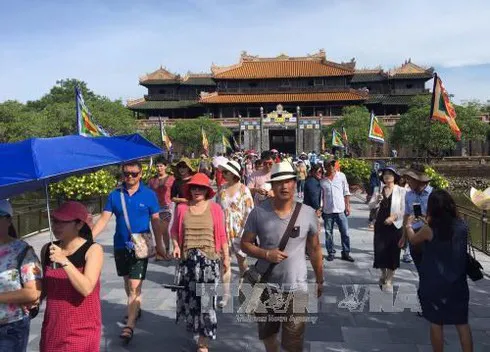Traditional Tet revived at Hue citadel

According to the Hue Monuments Conservation Centre, the Cay Neu (bamboo pole) erecting ceremony will be held at Trieu Mieu,
The Mieu and Long An palace on January 17 or the 23rd day of the last lunar month to announce the arrival of Tet. The “Ancient fragrance of Tet cake” programme, which features a banh chung and banh tet making competition, is scheduled on January 18. Meanwhile, the flag tower will be lit up and cannons will be fired on New Year Eve.
The centre will offer free entry to its monuments during January 25-27, giving locals and tourists access to the former royal city. These days, visitors will have a chance to watch the Changing of Guards at Ngo Mon Gate, dragon dance, performances of nha nhac (Hue royal court music), royal games and calligraphy at Thai Hoa palace’s courtyard.
On the last day of the Tet festival, the bamboo pole will be taken down, ending the holiday. The same day, The Mieu and Long An palace will host the Khai An (Opening Seal) ceremony to start a new working year.
In recent years, Hue has emerged in the Vietnamese tourism map as a heritage destination where traditional rituals and cultural quintessence of the Nguyen Dynasty (1802 - 1945) have been well preserved.
The Hue Imperial Citadel was recognised as World Cultural Heritage Site by UNESCO in 1993. Hue, the former imperial capital of Vietnam for over 100 years, is home to five UNESCO heritages, including the ancient citadel relic complex (a World Cultural Heritage site), Hue royal court music (an intangible cultural heritage item), Nguyen Dynasty’s wood blocks (a documentary heritage item), Nguyen Dynasty’s royal administrative documents (part of the Asia-Pacific Register of UNESCO’s Memory of the World Programme), and literature on Hue royal architecture (another documentary heritage).
In 2020, the province’s tourism sector strives to welcome 5-5.2 million visitors, 40-45 percent of whom are foreigners. Total tourism revenue is expected at some 12 trillion VND (518.7 million USD).





